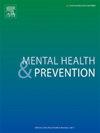澳大利亚一所大学的性取向和/或性别不同的学生中心理困扰的相关因素:一项横断面研究
IF 2.4
Q2 Medicine
引用次数: 0
摘要
虽然心理疾病——如心理困扰——在大学生中很普遍,但人们对性取向和/或性别多元化大学生的心理健康知之甚少。本研究旨在确定社会人口因素、基本需求安全、适应力和健康相关行为是否与澳大利亚一所大学的性取向和/或性别不同的学生的心理困扰有关。方法:本研究采用定量横断面亚组分析,对澳大利亚一所大学进行的大型机构调查中符合条件的学生的反应进行分析。多元线性回归分析评估了社会人口因素(年龄和性别认同)、基本需求安全(经济压力、食品安全以及在大学期间遭受性侵犯和/或性骚扰的经历)、复原力(特别是“反弹”复原力)和与健康相关的行为(饮酒、使用其他药物、体育活动和睡眠时间),并将心理困扰作为研究结果。结果对411名性向和/或性别差异学生的回答进行分析,得出了显著的结果(F [6,387] = 50.493, p <;.001)解释了超过40%的心理困扰差异(相对值R2 = .430)。认为自己是女性和经历粮食不安全与更高的心理困扰有关。更年轻、更强的“反弹”能力和更长的睡眠时间与更低的心理困扰有关。进一步的研究应该调查这些关联如何在澳大利亚的性取向和/或性别多样化的大学生中发生变化——在不同的机构中,随着时间的推移,在更广泛的社会和结构因素中。还讨论了对未来实践的影响,特别是机构干预和数据收集。本文章由计算机程序翻译,如有差异,请以英文原文为准。
Factors associated with psychological distress among sexuality and/or gender diverse students at an Australian university: A cross-sectional study
Objectives
While mental ill-health — such as psychological distress — is prevalent among university students, less is known about sexuality and/or gender diverse university students’ mental health. This study aimed to determine whether sociodemographic factors, basic needs security, resilience, and health-related behaviours were associated with psychological distress among a sample of sexuality and/or gender diverse students at an Australian university.
Methods
This study involved a quantitative cross-sectional subgroup analysis of eligible student responses to a larger institutional survey at an Australian university. A multiple linear regression analysis assessed sociodemographic factors (age and gender identity), basic needs security (financial stress, food security, and experience of sexual assault and/or sexual harassment during time at university), resilience (specifically ‘bounce back’ resilience), and health-related behaviours (alcohol use, other drugs use, physical activity, and sleep duration), with psychological distress as the outcome of interest.
Results
Analysis of 411 sexuality and/or gender diverse students’ responses yielded significant results (F [6,387] = 50.493, p < .001) explaining over 40% of the variance in psychological distress (adj. R2 = .430). Identifying as a woman and experiencing food insecurity were associated with higher psychological distress. Younger age, greater ‘bounce back’ resilience, and longer sleep duration were associated with lower psychological distress.
Conclusion
Further research should investigate how these associations may change among sexuality and/or gender diverse university students in Australia — across different institutions, over time, and amid broader social and structural factors. Implications for future practice — particularly institutional interventions and data-gathering — are also discussed.
求助全文
通过发布文献求助,成功后即可免费获取论文全文。
去求助
来源期刊

Mental Health and Prevention
Medicine-Psychiatry and Mental Health
CiteScore
2.10
自引率
0.00%
发文量
22
审稿时长
24 days
 求助内容:
求助内容: 应助结果提醒方式:
应助结果提醒方式:


